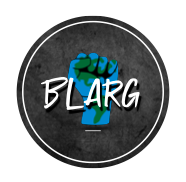The Brookhaven Landfill is located in Yaphank, Suffolk County, New York.
The Brookhaven Landfill is a municipal-owned landfill most proximate to the hamlet of North Bellport and operated by Brookhaven Town. The landfill opened in March 1974, with six cells. Four of these cells previously accepting household (municipal solid) waste have been permanently closed, but these cells have been found to be leaching chemicals into groundwater. The landfill stopped accepting municipal solid waste in 1990 but this has not stopped pollution. Part of the landfill is still currently active and is accepting construction and street debris, and toxic incinerator ash from burned wastes, causing more groundwater and air pollution — including release of noxious odors. The landfill has a gas collection system for methane and other gases and a permanent flare, releasing climate-warming greenhouse gases. While the landfill is directed for closure in 2024, the Town has not publicly released a plan outlining how this will happen, nor how the landfill pollution concerns will be addressed.
Waste associated with the Brookhaven Landfill
-
Landfill leachate forms when rainwater filters down through wastes piled up in landfills. When it comes into contact with a landfill, this rainwater “leaches” or pulls out chemicals from wastes. The resulting liquid is called leachate, and it can contain a wide range of chemical contaminants that are hazardous to human health.
In the U.S., composite liners, usually made of plastic and set over a layer of compacted clay soil surrounding the bottom and sides of the landfill are required. Liners are meant to protect groundwater and underlying soil from leachate releases—however, landfill liners, including those used on Brookhaven Landfill, commonly leak. What’s more, leachate collection and removal systems are often installed on landfills to remove leachate for treatment and disposal. At the Brookhaven Landfill, leachate is collected and treated on site with hydrogen peroxide in storage tanks (to reduce odors), then pumped and hauled away by tanker trucks to the Suffolk County Southwest Sewer District Wastewater Treatment Plant at Bergen Point—where after treatment, it is pumped into the Atlantic Ocean. In other areas, untreated leachate is commonly pumped into deep injection wells, moving toxic waste elsewhere—most commonly into other underserved communities, spreading pollution and injustice.
-
Contaminant plumes or concentrated liquid contaminants are commonly caused by landfills and the chemicals they leach. These plumes typically travel through earth in the same direction as groundwater. U.S. Geological Survey scientists detected a contaminant plume in the 1980s spreading from the Brookhaven Landfill, as toxic leachate breached its leaking liner through the region’s shallow Upper Glacial aquifer. North Bellport sits in the plume’s path, and water tests in and around the community have shown detectable, elevated levels of PFAS, iron, BPA, manganese, ammonia and 1,4-Dioxane in ground and surface waters.
-
Chemicals with the potential to harm the environment and/or human health due to their concentration, distribution, exposure type, and toxicity. Chemicals and contaminants of concern related to the Brookhaven Landfill can pollute air, land, and groundwater, and include:
1,1,1-trichloroethane, 1,1-dichloroethane, 1,2-dichloroethane, 1,4-Dioxane, 1,4-dichlorobenzene, 2-butanone (MEK), 4-methyl-2-pentanone, Acetone, Ammonia, Arsenic , Benzene , Bisphenol A (BPA), Cadmium, Chromium , Chlorobenzene, Chloroethane, Dioxins, Dichlorodifluoromethane, Ethylbenzene, Iron, Lead, Manganese, Mercury, Nickel, Particulate pollution, PCBs, PFAS, Styrene, Tetrachloroethene, Toluene, Trichloroethane, Trichlorotrifluoroethane, Vanadium, Vinyl chloride, Xylenes


